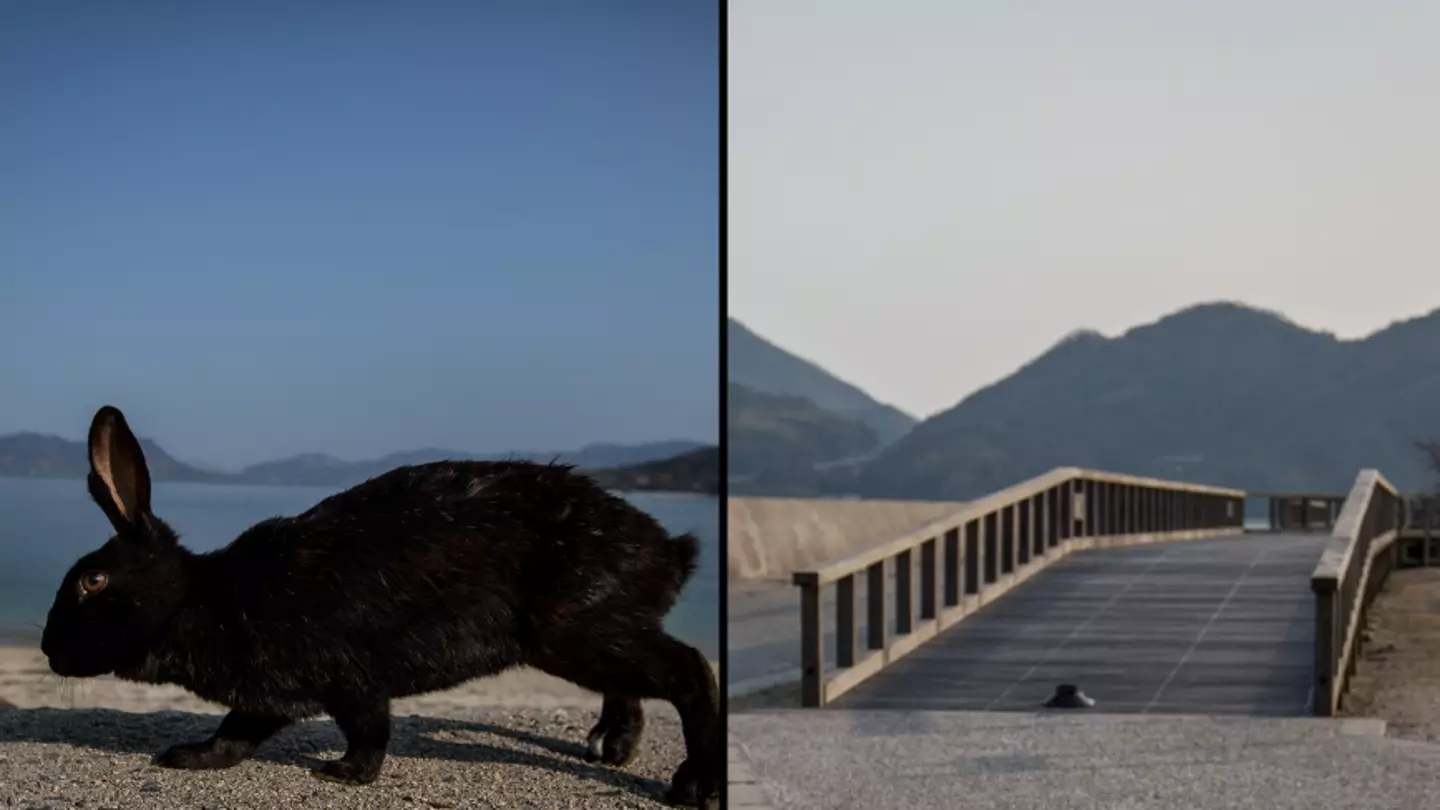
Taking a look at the history of 'Poison Gas Island' will certainly send you down quite the rabbit hole.
The fact the place is now known as 'Rabbit Island' because it is overrun with the furry little creatures is obviously quite the contrast to it's fearsome former nickname, but trust me, it earned it's stripes.
The small island of Ōkunoshima in the Inland Sea of Japan is completely unpopulated by humans, allowing thousands of wild rabbits to multiply and run amok.
Advert
It's cute and cuddly tenants have helped transform the forgotten piece of land into one of the country's most unusual tourist attractions, which now welcomes more than 100,000 visitors each year.
Explorers often share videos on social media being chased by a swarm of long eared creatures who are vying for food, only adding to its popularity with animal loving adventurers.
But although it might be brimming with with bunnies, it isn't all sweetness and light - just take a look inside the Poison Gas Museum.
Advert
Ōkunoshima wasn't designed to be a remote retreat for rabbit lovers - in fact, they wouldn't have even been able to find it at one point in time.
That's because the island was literally wiped off the map for a significant chunk of history to keep a lid on the government's secret skulduggery which was taking place on Poison Gas Island.
During the Second World War, the place earned it's sinister nickname as it housed a poison gas factory which was responsible for producing chemical warfare which was unleashed on China.
Fortified by Ōkunoshima's isolation and security, between 1927 and 1929, a chemical weapons plant was built there which went onto create more than six kilotons of mustard gas and tear gas.

The local fish preservation processor was even converted into a toxic gas reactor - right on top of the few residents, who later went on to suffer from toxic-exposure related health issues, along with the workers who were sworn to secrecy.
Advert
To keep their clandestine operation under wraps, Japan wiped Ōkunoshima off the map to maintain it's privacy.
It meant that despite it being less than 44 miles away from Hiroshima, even some locals were unaware of the place.
For decades, the poison gas production remained hush-hush.
So I'm sure you're wondering how a horde of rabbits waltzed in and took over the place.
Advert
It is believed that the bunnies were brought to the island to be used as test subjects for the effectiveness of the chemical weapons.
Although the official story is that these were euthanised or killed, there is speculation that the current bunny population are descendants of their tortured ancestors.
There are also rumours that a British couple brought the animals to the island, as well as one that a nearby school released them into the wild in 1971.

Either way, the bunnies are the bosses now.
Advert
Rabbit hunting is strictly forbidden on Ōkunoshima, despite their continuously growing numbers, while dogs and cats are banned. But the small mammals are running out of room.
President of the US-based rabbit rescue group House Rabbit Society, Margo DeMello, told National Geographic: "What you have is too many rabbits for such a small island. It really is a recent phenomenon."
A major decontamination operation was never carried out on Ōkunoshima either, so it isn't exactly the safest place for them.
The groundwater has been tainted by residual toxins, leaving the rabbits without a supply - hence why they are hot on the heels of human visitors clutching bottles of water, or food.
When you're not being pursued by a thirsty bunny though, you can check out the remnants of the old forts and the gas factory which still remain on Ōkunoshima - although entry is restricted as some areas are too dangerous to explore.
However, you can always check out the Poison Gas Museum, which was opened in 1988 to educate people on the island's participation in the horrors of war, for a safe and informative education on Ōkunoshima.
Featured Image Credit: Chris McGrath/Getty ImagesTopics: World News, History, Animals, World War 2, Weird